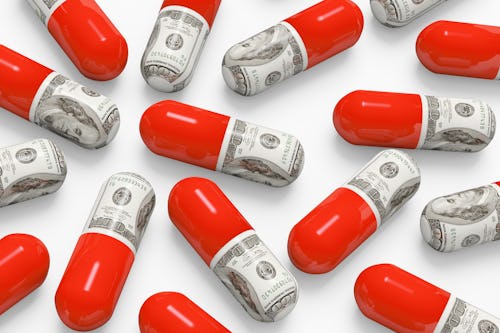
Under capitalism, there is no incentive as powerful as money. It’s the reason most of us do anything besides eat, sleep, and watch anime. Lawmakers in California know this too, which is why they’ve started paying people battling a meth addiction every time they test negative for the drug, according to NPR.
See, meth addiction has always been notoriously difficult to treat. Besides how physically dependent the body becomes on the substance, meth also decreases the brain’s functions to the point where seeking help can become impossible. On top of all of that, meth users tend to come from lower-income households, according to the CDC, and rehab programs or other kinds of medical interventions can be prohibitively expensive.
All of this, coupled with a recent uptick in meth use, prompted California to pass Senate Bill 110 earlier this month, which will require Medicaid to cover cash-incentivized meth addiction treatment. Notably, the bill received bipartisan support and is expected to be signed into law by Governor Gavin Newsom.
Paying people to stop abusing drugs seems revolutionary, but the concept is not new. It’s part of a behavioral therapy called contingency management, which is instituted in incentive-based programming. Clinics around the state were already using contingency management to treat victims of meth addiction and it’s been proven to work. The Department of Veteran Affairs has used this type of therapy for 10 years and had a 92% success rate for sobriety, according to NPR. States like Washington, Montana and West Virginia are also looking into the method.
In California, The San Francisco AIDS Foundation was already paying patients $7 for every week that someone tested negative for the drug. Even thought the amount is small, the method proved to be highly successful and the Foundation’s data found that 63% of people who were part of the program quit using meth in 2019. Instead of condemning people for their addiction, the clinic engaged in positive reinforcement and made patients feel like their wellbeing was important enough for them to get paid for staying healthy.
"It was the first opportunity where I was like, I have self-worth, still. It's buried. This person sees it and is willing to give me seven dollars, just to take care of myself. That was very motivating," Billy Lemon, who took part in the San Francisco AIDS Foundation program, told NPR.
All of this is great news, of course — it proves that substance use disorder is less stigmatized. But we also need to acknowledge the ways in which meth and other drugs are criminalized when they are a problem in predominantly Black communities, but treated with compassion once they become white problems. It’s hard not to see the fact that meth has clawed its way into rural and white communities and all of a sudden, these gentler and more wellness-based approaches have begun to be employed, as VICE pointed out.
The bottom line is that we need more effective treatments and rehab programming urgently and for everyone. In the past few years, meth abuse skyrocketed after a period of steady decline. According to the latest data by the National Institute of Drug Abuse, the number of meth users rose from 684,000 in 2016 to 964,000 in 2017 and likely grew even more during the pandemic. The increasing rate of meth use is particularly prevalent among young people: The average meth user today is just 23 years old. Desperate times call for us to use every tool in our arsenal. Hopefully what happens in California can serve as an example for everyone else.







